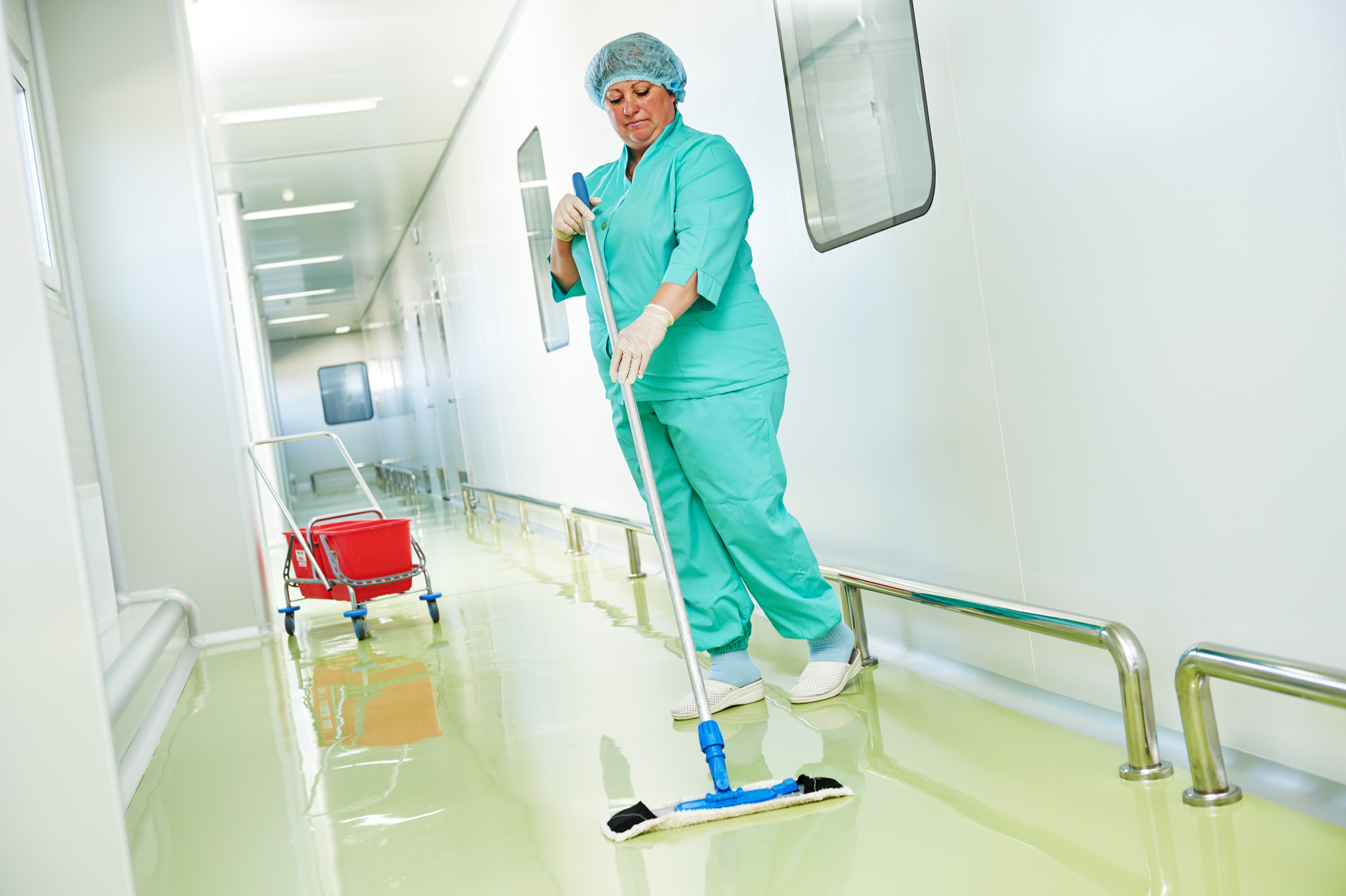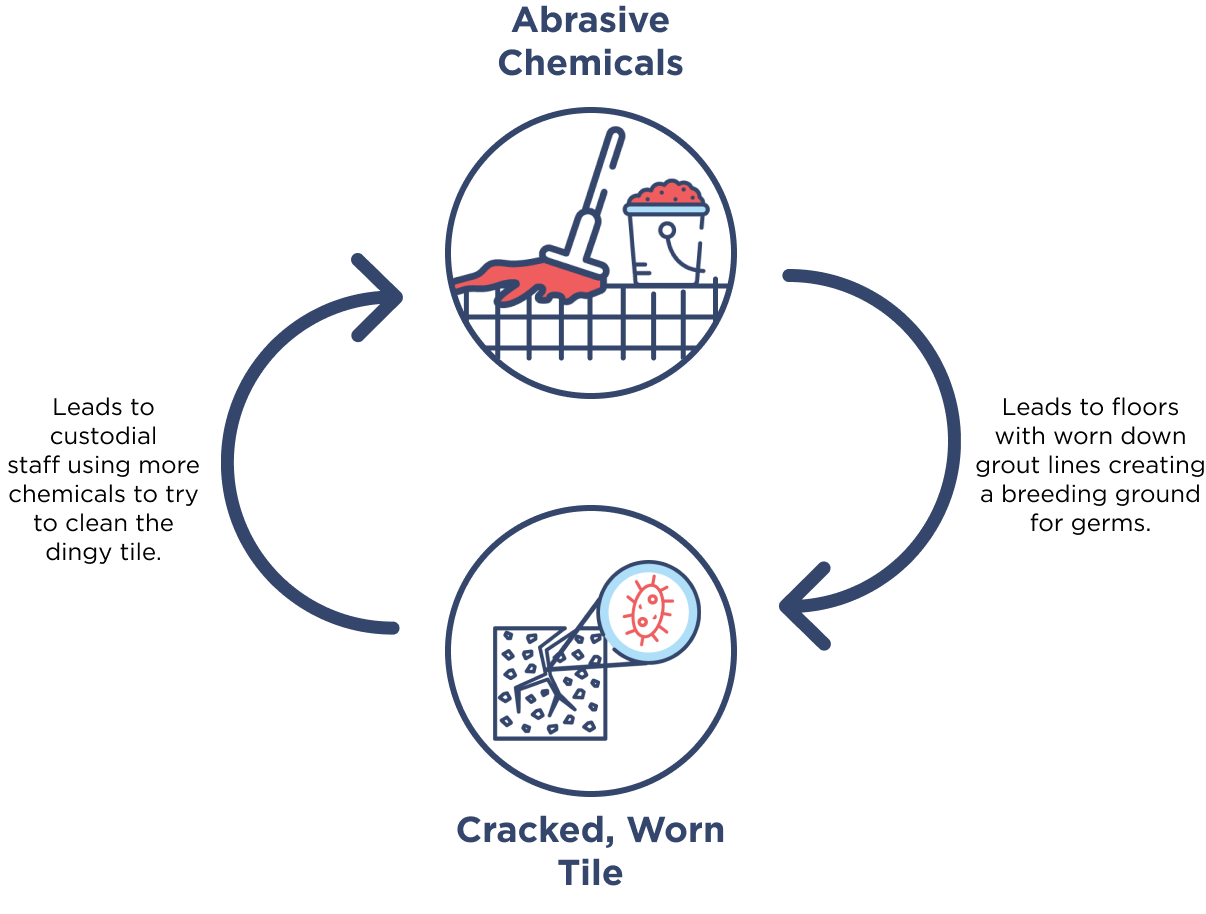
People associate hospitals with stark white halls and the scent of rubbing alcohol an environment thought to be sterile by many, but the truth is all healthcare facilities have to work extremely hard to keep infections down. Whether it’s because of biohazard contamination or simply due to high patient foot traffic, there are plenty of reasons to decontaminate hospital flooring on a regular basis.
The Dangerous Cycle of Heavy Decontaminant Usage

The potential presence of harmful pathogens, especially in a setting where immunocompromised people may be present, often compels staff to sanitize flooring with harsh chemicals, like bleach, or other decontaminants.
Unfortunately, this practice can be counterproductive. In healthcare facilities, a strong chemical disinfectant isn’t always the best solution.
An understanding of surface compatibility is an important part of determining an appropriate disinfectant routine for hospital flooring. Products that are incompatible with certain types of flooring can not only cause discoloration and fading, they can damage the surface itself – sometimes voiding flooring warranties – and leave floors vulnerable to becoming hotbeds for bacteria growth.
Although early damage from harsh chemicals may still be invisible to the naked eye, any slightly pitted or corroded areas invite bacteria to enter and breed. Improper management of dilution ratios and dwell times may also contribute to the damage that disinfectants can cause.
The Fallout from Chemical Damage
Many environmental services workers equate a product’s success rate with the amount applied, but this is not the case. Excess chemical residue can make surfaces slippery or tacky, causing dirt to adhere more quickly. It also impacts the integrity of the flooring.
As the corrosion progresses, it becomes deeper and more visible, trapping debris and contaminants within the surface’s imperfections. This often prompts even harsher cleaning methods, deepening the damage and continuing the cycle.
Smart Disinfectant Usage
A detailed and area-specific maintenance plan can be much more effective at keeping infection rates down when the flooring surface is sealed or without depressions or crevices.
It removes the breeding grounds for harmful bacteria so long as the surface integrity is maintained, easing the burden of maintenance and eliminating the need for routine use of harsh disinfectants.
Many hospital flooring types, when properly sealed, can be cleaned daily with a neutral pH cleaner or a quaternary disinfectant, making more aggressive maintenance periodic and leading to safer, sustainable flooring.
This is an excerpt from our full report, available here.

